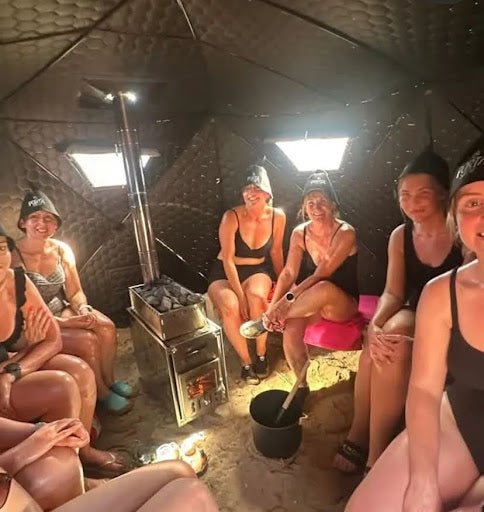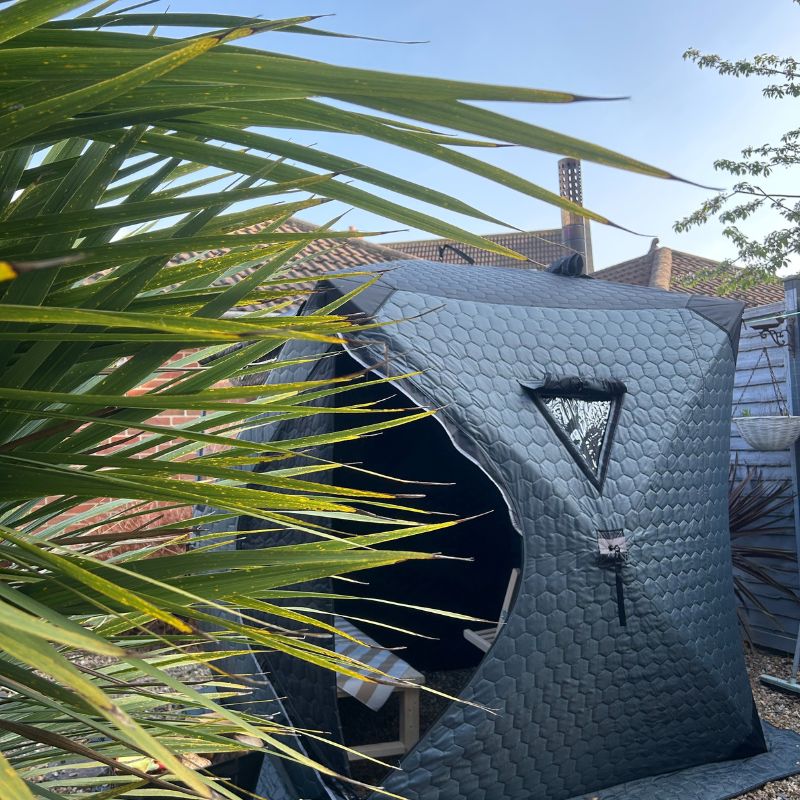The first time I hauled a wood-fired sauna tent onto a pebbled beach at sunrise, I wasn’t thinking about performance gains or recovery science. I was thinking about toes. Specifically, the numb kind you get after a winter dip when the wind whips in off the Solent and even your flask feels cold. Our small group had met for a pre-work swim, the kind of session that starts with laughter and ends with stiff fingers and speedy attempts at changing under a towel. That morning, we lit the stove, zipped the door and discovered what warmth feels like when you have earned it in cold water.
What has surprised me most since then is how fast the sauna became part of our swimming rhythm. We are a mixed bunch. Some are triathletes chasing times. Some are year-round dippers who swear by the mood boost. Some are there for the social coffee on the sea wall after. The sauna gave us a gentle centre of gravity. People stayed longer. They chatted more. They did a second dip. Beginners who were nervous about their first cold swim said yes because they knew there was somewhere to thaw out safely afterwards.
Set-up is simple. Two of us can pitch the tent in about ten minutes, then it is twenty minutes to heat. On club mornings we arrive early, stack dry hardwood, and let that first wave of heat soak into the canvas while the tide creeps in. By the time the group arrives, there is a clear flow. Warm up, safety brief, swim within your limits, hot tea, and into the sauna. Sessions turn into little arcs. You can feel your body come back to life as the heat hits your skin and your breathing slows. People talk about the contrast between cold and hot as a reset. I think it is also a way to pay attention. You notice the sea, then you notice the warmth. You notice each other.
This year we supported a Channel swimmer on their final long training blocks. They had done the hard yards already. What they needed was consistency, community and a way to recover enough to keep piling on the volume. We met at dawn for feeds practice and long, steady swims. The sauna sat a few metres up the shingle, ticking away, a soft chimney plume against the pale sky. Between sets, they could step out of the wind, bring their core temperature up and take on calories without shivering. After the bigger efforts, we used the heat to loosen tight shoulders and backs before the drive home. It was not a magic trick. Crossing the Channel is never easy. But the warmth meant fewer cut-short sessions and a happier swimmer on the days that usually feel bleak.
Using a sauna at outdoor venues does come with a bit of logistics and a lot of respect. We choose spots with space and a safe entry, we keep the stove ash contained, and we leave no trace. We never encourage people to stay in the heat too long. Short, sensible spells are more than enough, especially after cold water. We also rotate time inside so everyone gets a turn. On big social swims we put up a small whiteboard. Five minutes in, five minutes out, then decide if you want another. It keeps the flow fair and the atmosphere light.
What I didn’t expect was the way it boosted our quieter members. The sauna became a place to check in. You sit shoulder to shoulder on the bench, steam drifting, listening to the crackle. New swimmers ask questions they might be shy to ask on a windy beach. How do you manage afterdrop. What should I eat before a winter dip. How do you spot when you have done enough for the day. The answers feel different when you are warm and unhurried. The sea teaches us to respect limits. The heat helps us hear that lesson.
For community organisers, adding a portable sauna has a few practical advantages. First, it extends the season without turning swimming into an ordeal. People still feel the honest cold, but they also feel looked after. Second, it encourages good habits. Warm recovery reduces the temptation to jump into a scalding shower later or sit in the car with the heater on full blast while still wet. Third, it builds momentum. We found that once word got around, participation in our safety brief improved, more people volunteered with tea and kit, and our WhatsApp group stopped going quiet in January.
If you are thinking about trying it at your local lake or beach, start small and treat the sauna as shared kit. Two or three volunteers to set up and manage the stove is plenty. Bring more water than you think you will need for the stove kettle and for rinsing. Have a simple rota, a bucket for ash, and a plan for windier days. Most of all, keep the invitation open. The best sessions are when the Channel hopeful, the first-timer and the casual Saturday dipper are all in the same little cloud of steam, swapping stories.
On the day our Channel swimmer called to say they had landed in France, our group messages lit up. There were cheers, photos, ice cream emojis, the lot. Later, we met at the beach, set up the sauna and watched the sun drop behind the pier. We talked about the crossing, but we also talked about everything that came before it. The dark mornings. The fog. The gulls that steal your croissant. The feeling when your fingertips touch numb, then sting, then tingle back to life. A portable sauna will never take away the sea’s challenge. It only gives you a warm place to share what the sea gives back.
For us, that has been the real win. Not just warmer toes, but a stronger community. We still show up for the water. We stay for the heat, the chat and the quiet moments that make cold swimming feel like the best idea in the world.


Leave a comment
All comments are moderated before being published.
This site is protected by hCaptcha and the hCaptcha Privacy Policy and Terms of Service apply.